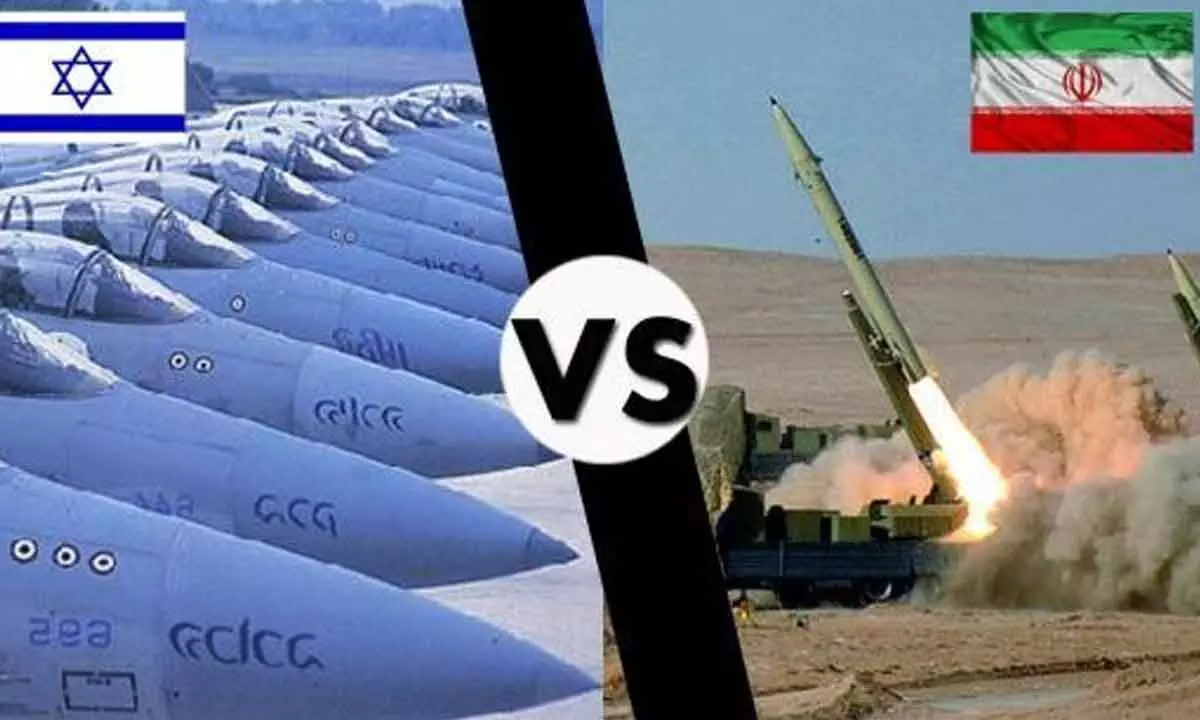The Israel and Iran conflict can undermine global economic growth
Exports of IT-led services may feel greater heat as developed economies continue to brave challenges
image for illustrative purpose

While Indian stock markets ended the year at record highs, the economy has delivered positive surprises, with ₹1.6 lakh crore becoming the new normal for monthly GST collections and GDP growth hitting 7.7% between April and September on top of a 7.2% rise in 2022-23.
The Reserve Bank of India (RBI), which had earlier projected India’s real GDP to grow 6.5% in 2023-24, has recently raised its forecast to 7%. The Union Finance Ministry is more sanguine as of now, indicating an uptick of over 6.5% for the year ending March 31, 2024, in its review of the economy published.
While the domestic growth engine is pulling along, risks to the growth and stability outlook mainly emanate from outside the country, the Finance Ministry noted. Slack global demand has hurt goods exports through 2023, and IT-led services exports may feel greater heat in the coming year as developed economies continue to face challenges. While hopes of peaceful resolutions in conflict-riven zones remain slim, fresh disruptions like the attacks on shipping lines in the Red Sea corridors could dent them.
According to S&P Global, India's economy is expected to grow by 6.5% in the 2024-2025 fiscal year and 7% in 2026. The OECD expects India to grow by 6.1% in 2024, making it the fastest-growing major economy. Goldman Sachs expects India's GDP to grow by 6.3% in 2024, citing its macro-economic resilience and lower vulnerability to external shocks. The International Monetary Fund also expects India's growth to remain strong, projecting a 6.3% expansion in the financial year between April 2024 and March 2025.
But the on-the-ground reality has continued to frustrate even the most ardent of India’s champions. From bold predictions that it would overtake China (an economy still five times larger than India’s), to McKinsey’s 2007 “bird of gold” promise of the Indian consumer that never quite panned out, to deregulation followed by policy reversals and crises of confidence in doing business with India, to devastating periods through the pandemic, the country’s promised inevitable rise has remained elusive. What’s different now? There are several positive trends converging, from different sides of the Indian business ecosystem: demand, supply, and the system-wide facilitating factors; in combination, they can transcend economic cycles, macro shocks, and policy reversals.
Iran is well aware of the extent and capability of Israel’s air defenses. The scale of the strike was almost certainly designed to enable at least some of the attacking munitions to penetrate those defenses and cause some degree of damage. Their inability to do so was doubtless a disappointment for Tehran, but the Iranians can probably still console themselves that the attack frightened the Israeli people and alarmed their government. Iran probably hopes that it was unpleasant enough to give Israeli leaders pause the next time they consider an operation like the embassy strike.
Moreover, the clerical regime faces significant economic challenges, widespread protests, and violence from ethnic Balochis. In addition, Iran’s military is weak, and it would be on the losing end if there were an all-out confrontation with Israeli military forces, let alone if the United States came to Israel’s aid, as it likely would (and as Iran certainly believes it would). A regional war where Iran might be on the losing end is a risky proposition for a regime already in a difficult position.
Yet Israel’s calculations are also complex. Iran arms, funds, and trains an array of Israel’s regional foes, including Hamas and Hezbollah. Israeli leaders are preparing for a conflict with Hezbollah, and some even see it as inevitable. Iran also backs the Houthis in Yemen, who are attacking international shipping in the name of striking Israel. Not surprisingly, Israeli leaders believe stopping Iranian influence in the region is perhaps the country’s top priority.
High crude prices will have a bearing on India’s CAD (current account deficit) as it rises when the total value of goods and services a country imports exceeds the total value of goods and services exported. Every $10 increase in crude oil prices can cause CAD to expand by 40-50 basis points, according to analysts. A higher CAD can affect investor confidence and weaken the country’s currency, which in turn can make imports more expensive, leading to higher inflation and poorer purchasing power of people.
The impact ideally will be felt through two channels - an increase in inflation and a higher current account deficit. The impact on inflation would depend on how much higher prices are passed on to the consumers.
If the conflict continues and prices remain high for a longer period it would translate into higher inflation, and lower profitability since the manufacturer does not have the pricing power due to the low demand.

